This Sourdough Starter is pretty darn easy to do and a great option for delicious homemade baked goods! A sourdough starter doesn’t have to be a chore, and the end result is worth the patience in the beginning. If you like homemade treats try my Sourdough Pretzels!
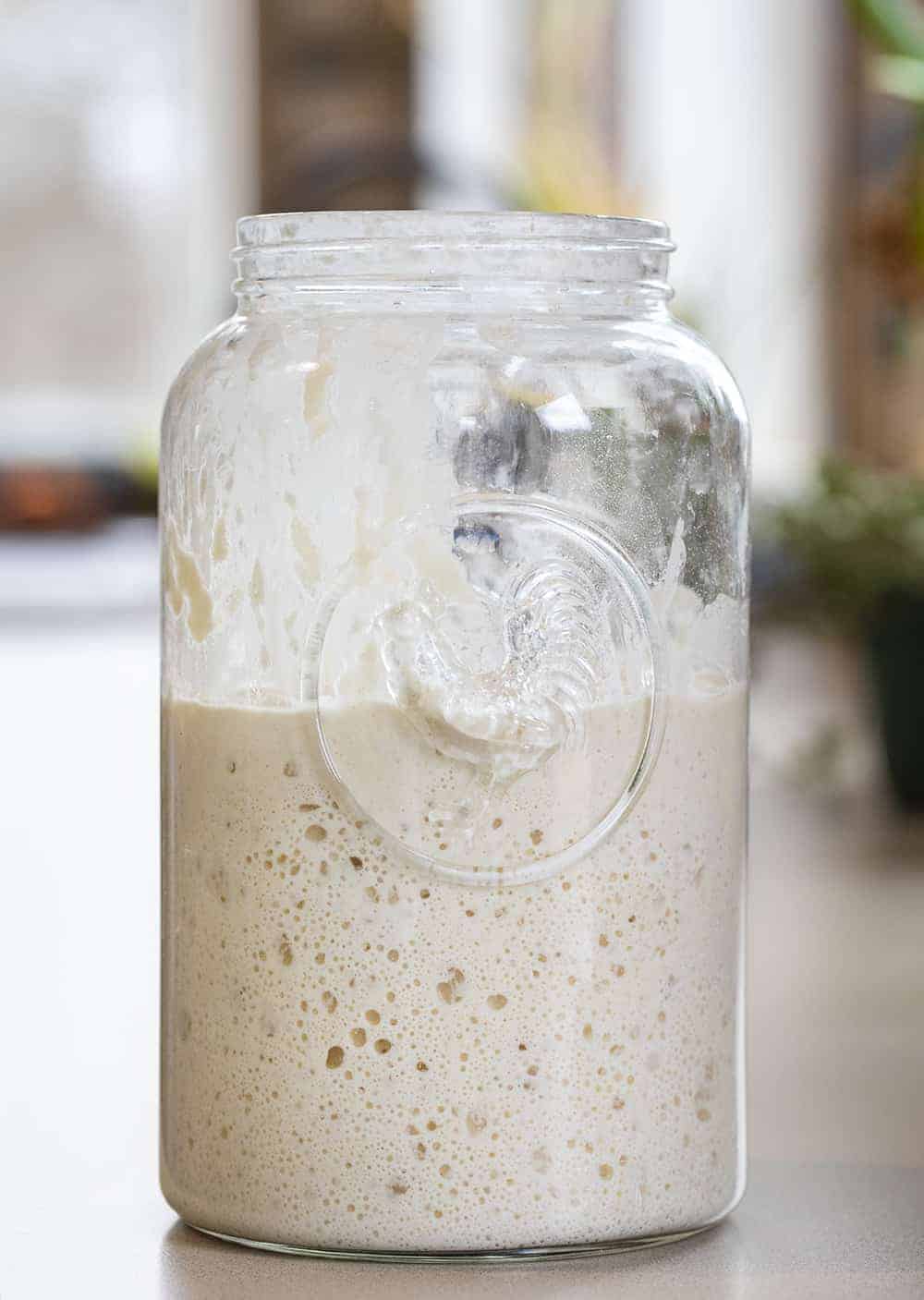
Sourdough Starter
I have to start out by saying that this is how *I* do a starter. I have watched every expert under the sun and read every book and let me tell you something… they are all different. So I have been testing and testing and retesting and using life experience to determine what works best for me. Well, I finally decided on what worked best for me, and it could not be easier and straight forward. The ingredients are simple: flour and water. And, with just two measurements to remember, the feeding is a piece of cake (or should I say bread😉) as well!

Getting your Sourdough Starter Started
Now if you want to bring science into it, the type of flour and type of water you use are important. They can produce a better product. But I am here to tell you that you can absolutely use all-purpose bleached flour from Dollar General and it will still be ok. Make sure you have the following materials and ingredients on hand:
- Jar & Lid – I prefer glass, you don’t want to use metal or plastic. If you don’t have a lid use a paper towel and rubber band. A good size jar to have on hand for a sourdough starter is a quart (32 ounces) or something close to that capacity.
- Flour – I prefer organic unbleached all-purpose, but also love whole-wheat and bread flour. Or, give rye flour a try.
- Water -Purified is best. Have chlorinated tap water (as most people do)? You can use bottled water or just set the water out uncovered for 24 hours before using it to feed your starter. This allows the chlorine to evaporate so it won’t kill the wild yeast.
That’s it for supplies! Now, let’s get to making the starter.
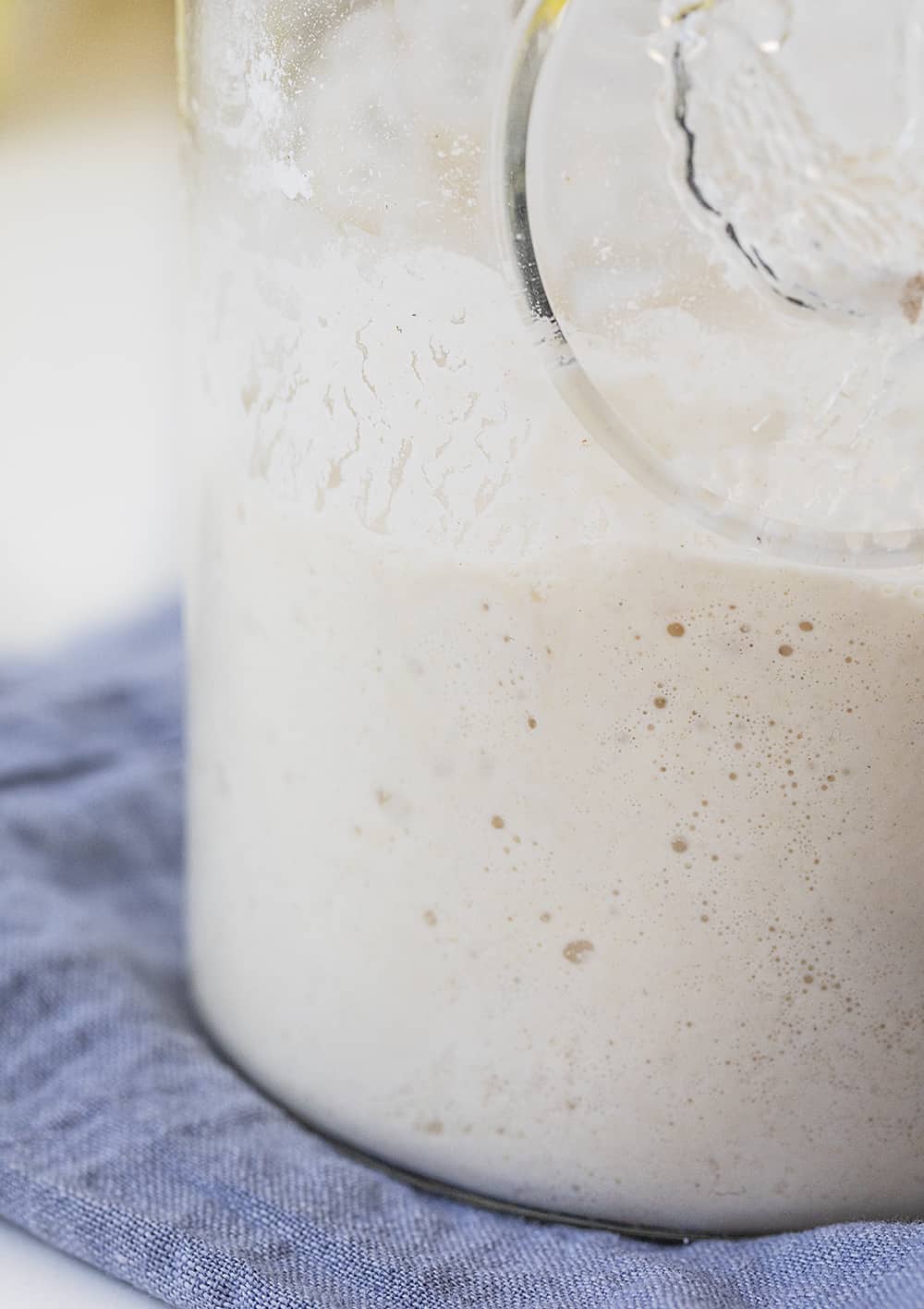
How to Make a Sourdough Starter
Remember these amounts: 1/2 cup flour and 1/4-1/3 cup water. These are the only measurements you will need to remember throughout this entire process of creating your sourdough starter. And trust me, you will use those measurements a lot with all the ‘feeding’, going on! After all, the goal is to get those microorganisms to work for that sour and fermented flavor that sourdough is known for.
To begin, add the flour and water to a jar and stir well. Try not to use a metal spoon. After all, Grandma said she always uses the handle of her wooden spoon to stir. Now gently cover the jar (do not seal it closed) and let it sit in a warm place (70°F is best) for 24 hours. The best option for a cover is a paper towel and rubber band. Or, just remember to keep the jar lid loosely sealed. Try to keep it in an area of your house that is somewhat warm. Very cool rooms tend to slow the action of a starter. Wait 24 hours before checking the mixture.

‘Feeding’ the Sourdough Starter
With sourdough starters, you will hear the term ‘feeding’. This is simply adding the flour and water to the mixture to keep the microorganisms working. Remember the measurements I told you to get ingrained in your brain? The 1/2 cup flour and 1/4-1/3 cup water is all you will need throughout the ‘feeding’ process.
Day 2: After 24 hours, check the mixture for bubbles. If you see bubbles, add the flour and the water, mixing it well, and let it sit for the next 24 hours. If you don’t see bubbles, do not get discouraged! It sometimes takes a couple of days for the science of it all to work. Just wait another day (or even two) until the first feeding.
Day 3: After another 24 hours, check for bubbles. If you do see bubbles, remove half of the starter, add the 1⁄2 cup flour and 1⁄4-1/3 cup water and stir thoroughly. Let sit 24 hours. Oh, and don’t get rid of the starter you removed! I will give you some ideas on how to use this in the end.
For the third feeding, remove half of the starter (but don’t throw it out!), and feed with 1⁄2 cup and 1⁄4 cup water, stirring thoroughly. Let sit 24 hours. (And yes, you can begin a new starter with the discard! Try adding a new kind of four! Or simply use to make crackers or pancakes.)
On days 4, 5, 6 you can feed it 2 times a day with those measurements that are sure to be memorized at this point😀. Continue this routine (discarding before feeding) until the starter is consistently bubbling and doubling in size within 8 hours of each feeding.
It is now ready to use for a perfect Sourdough Bread!
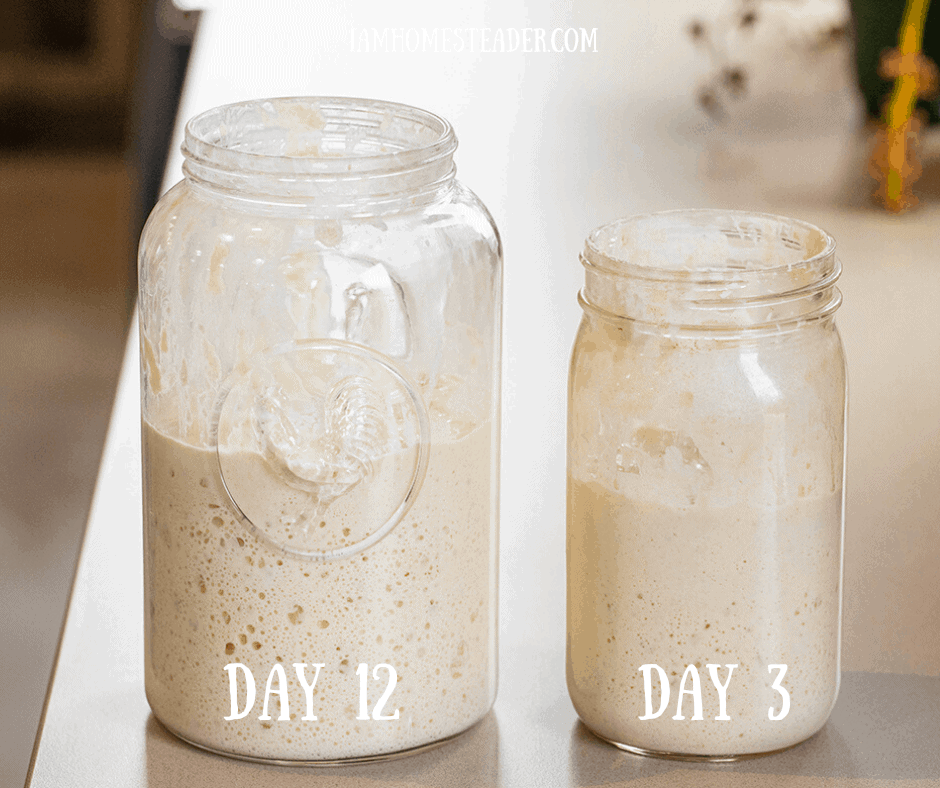
How to Store a Sourdough Starter
After all the feeding and you know you have a strong, active starter, you can store the starter in the refrigerator and feed it about once per week. When you plan to use the starter, pull it out of the refrigerator 24 hours in advance to feed it and allow it to warm up and grow.
These starters get better with age, so don’t think you have to use it right away! Sourdough starters are hearty, so they last quite a while. But, like all living things, it can get ‘sick’ or go bad. If it turns pink, red, moldy, or gets a really putrid smell, throw it out. After all, you now know how to start again!
What Flours Can You Use in a Sourdough Starter?
All grain-based flours will work beautifully in a starter. A few examples are:
- Rye
- Bread Flour
- Rice
- Whole Wheat
- Einkorn
Truesourdough.com has a great comprehensive guide to flours.
Vanilla and Bean has a great guide to Gluten-Free sourdough starter.
What to do with the Discard?
As I said, don’t throw out the sourdough starter that you remove each feeding time to make room for the starter to rise. Just make sure your sourdough starter is room temperature (about 70°F) before using it in baking. Here are some ideas on how to use (and enjoy) the excess sourdough starter.
- Sourdough Bread (not until day 6 or 7)
- Sourdough Pancakes (seriously SO GOOD!)
- Sourdough English Muffins
- Sourdough Brownies
- Sourdough Pretzels
- Cinnamon Rolls (the best!)
- Banana Bread
- Sourdough Crackers (like saltines)
- Sourdough Chocolate Chip Cookies
- Sourdough Pasta Noodles
As I mentioned, this is how *I* make a starter. King Arthur recommends 1 cup flour and 1/2 cup water and they suggest you weigh ingredients with a scale. (This is the same equivalent that I use, just doubled.) Pro Home Cooks has a great free downloadable Sourdough guide for those who really want to understand the science behind it.
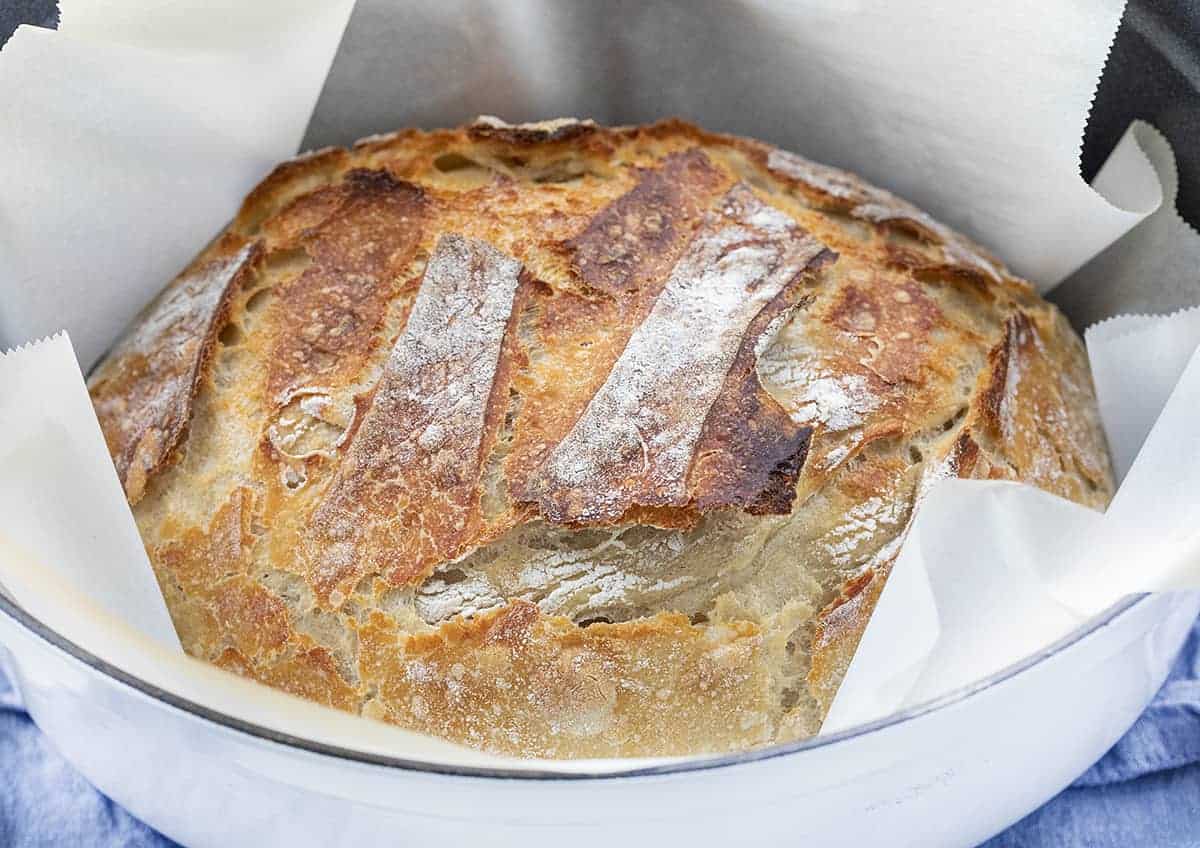
Here is the recipe for Simple Sourdough Bread!
More Sourdough Recipes

Sourdough Starter
Ingredients
- ½ cup flour, whole wheat or unbleached all-purpose
- ¼-⅓ cup water*, 75°F is ideal
- 1 glass jar, or bowl (about 32 ounces)
- 1 paper towel
- 1 rubber band
Instructions
TO BEGIN
- Start the process by adding ½ cup whole wheat flour and ¼ cup water to the jar. (If you need more flour to reach a pancake batter consistency, you can add up to ¼ cup more.)
THE FIRST FEEDING
- Stir thoroughly and cover with a towel and rubber band. Let sit for 24 hours at room temperature. (Try to keep it in an area of your house that is somewhat warm. Very cool rooms tend to slow the action of a starter.)
- After 24 hours, check the mixture for bubbles. If you see some, add ½ cup all-purpose flour and ¼-⅓cup water. If you don’t see bubbles, give it a stir and let sit 24 more hours.
THE SECOND FEEDING
- Check for bubbles again. If you do see bubbles, remove half of the starter, add ½ cup all-purpose flour and ¼-⅓ cup water and stir thoroughly. Let sit 24 hours.
THE THIRD FEEDING
- Remove half of the starter, and feed with ½ cup all-purpose flour and ¼ cup water, stirring thoroughly. Let sit 24 hours.
ADDITIONAL FEEDINGS
- On days 4, 5, 6 you can feed it 2 times a day, if you want and plan on using it.
- Continue this routine until the starter is consistently bubbling and doubling in size within 8 hours of each feeding.
- From this point (or even on day 5), you can store the starter in the refrigerator and feed it about once per week. When you plan to use the starter, pull it out of the refrigerator 24 hours in advance to feed it and allow it to warm up and grow.
Video
Notes
Did you make this recipe?
You can tag me at @iamhomesteader.
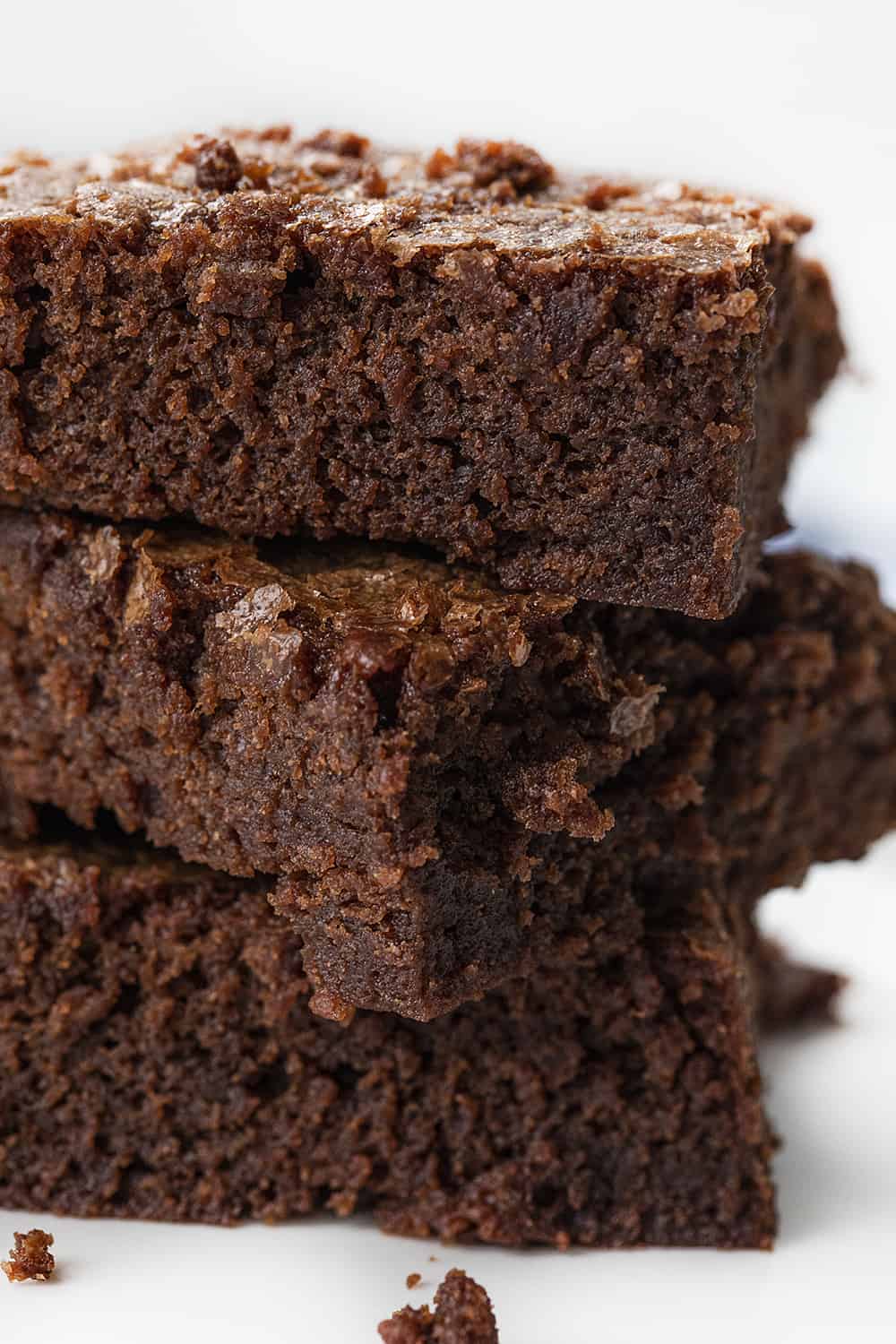
I used this starter to make seriously decadent Chocolate Sourdough Brownies!
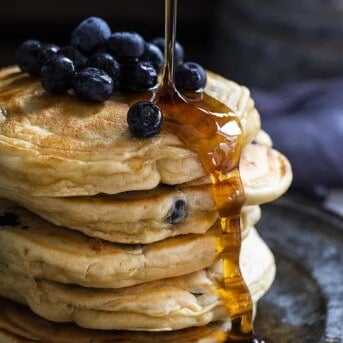
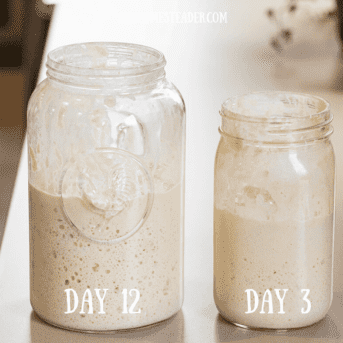
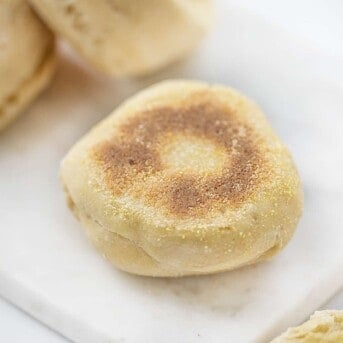
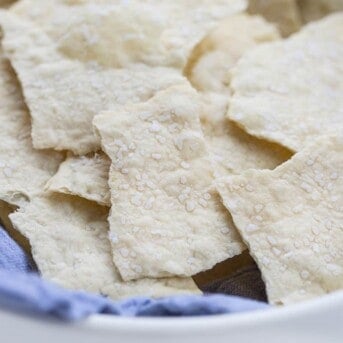
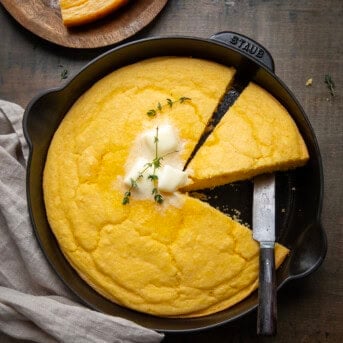


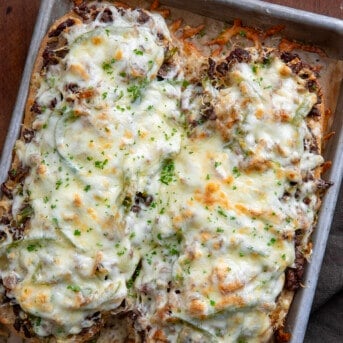
Does this work for gluten free flour as well?
Hi Amanda, I have tried so many of your recipes and I love them! I love your blog! I’m trying this sourdough starter for the first time. I have two questions please –
1. You mentioned you can use day 3 discard in other recipes. But what about discard pile from day 4, 5, or 6 onwards. Can a discard from any of day 4, 5, or 6 or all of it discarded together from day 3+4+5+6 be used in recipes?
2. Once we put the ready starter day 7 in the fridge, how long can it stay good? And with once a week feeding, do I feed it and put it back in the fridge right away, or leave it outside at room temperature to bubble up again?
Thank you so so much! I’m excited to try this sourdough bread the first time. Thanks so much again!
Our starter was bubbly, but now we are on day 7ish, and it hasn’t been bubbly for a few days… It does have bubbles, but not enough. I don’t know whether to leave it alone to grow more bubbles (it’s cool these days) or feed it more… Suggestions? And how would I know which to do? I fed it twice a couple of times, but it didn’t seem to make a difference. Help!
I would make sure your ratios are as good as you can get them. For instance, start over in a new jar with that starter. Measure out 1 cup, then add 1 cup of your flour, then 1 cup of warm water. If it doesn’t grow (and double) in 6 hours, then it might not be a productive starter. HOWEVER, if there are bubbles, it can be revived. You can try with a better quality grain flour, make sure you are using warm (non-chlorinated water) and that it is in a warm place, around 70°F. Good luck!
can i use the discard in muffins if so how much for 1 cup flour and do i use baking powder also
after day 3 on starter it didn’t double feed on day 4 if it doesn’t double what then
Feed it again and give it another 12 hours.
On days 4, 5, and 6 do you discard some starter before feeding?
Hi Amanda,
I Will be using my starter tomorrow to make your bread. When I remove 3/4 of a cup. To make the bread, how much do I add back into my starter. Getting a little confused as what to do. Or do i just remove and add 1/2 cup with the water once a week.
Thank you
Deirdre
Could you use gluten free flour?
Mine was a fail..made me sad to waste time and ingredients..
It probably wasn’t!! I have seen a starter revived after several days. (Even weeks!) Simply changing how you store it could make all the difference. For instance, sometimes I cover mine (without tightening the lid) and that seems to help. 🙂
It’s not a fail, I am sure it could be revived. I’m sad you gave up!
I am working on getting a mature starter, do you have a recipe for sourdough pancakes to be used with the discard, please and thankyou!
Can this starter be used in a bread machine. When would I add it in
Can you put the discarded starter in another jar and keep going with it to make additional starter to gift to friends?
Yes.
Good morning, I may have fed my starter too many times without discarding, will that matter? Lol, I can’t remember which step or day I’m on anymore! 🙈
lol, as long as it is continuing to rise and not overflowing, you should be ok. 🙂
If my jar is large, do I have to discard with each feed? I have been. Mine is bubbling and smells ok but it’s not doubling in size. I did feed it twice today. I’m on day 7. Can’t wait to use it!
You don’t have to discard as much as long as you are seeing consistent growth and bubbles! I missed 2 days of discarding in one of my starters and it was just fine. (Just don’t tell the experts I sad that😂)
I started my starter last week, it bubbles fine but does not rise in jar. I got dark liquid on top one day, I heard that means it needs more feeding. So I did that. Still bubbles, that’s it. Today it smelled like paint thinner. Discarded a lot and fed 1/2 c flour 1/3 c water. Should I toss it all and start all over??
Hoping to find banana bread recipe on your site.
https://iambaker.net/sourdough-banana-bread/
I posted a question yesterday. But I don’t see it so I’ll ask again. I’m using rice flour to make gluten free bread. When I do make bread do I continue using rice flour? Or do I use a gluten free all purpose flour? Thank you.
Hi Lola- I haven’t made the starter with Rice Flour and certainly not with Gluten Free flour so I wouldn’t feel comfortable offering advice on this.
After days 6,7, do I need to put in the fridge or will it hurt it to let it continue on the counter for a few more days?
Yes!! You can leave it out as long as you are using it!!
Is my excess that I “discard” on day 3 considered active that I could use to make bread?
on day 4-6 you said to feed it twice a day can you feed it just once in 24 hrs
You can, however it will fall pretty dramatically between feedings.